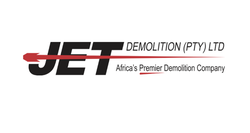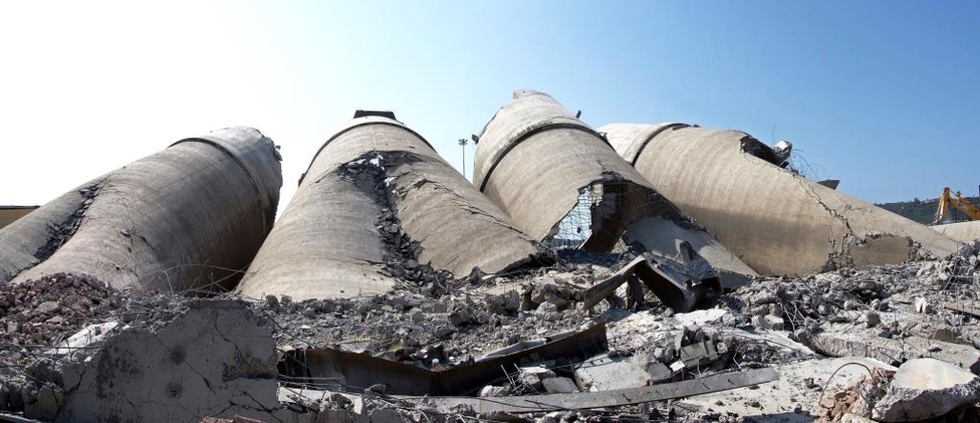Jet Demolition is a fully compliant and registered asbestos contractor
| Jet Demolition is a fully compliant and registered asbestos contractor_approved | 27.5 KB | Download | |
| Jet Demolition Contracts and Project Manager Kate Bester | 395.2 KB | Download | |
| Removal of Asbestos sheeting | 3.42 MB | Download | |
| Stripped asbestos sheeting prepared and set aside for safe disposal | 4.27 MB | Download |
“Due to the nature of our works, we encounter hazardous materials on the vast majority of our sites,” explains Jet Demolition Contracts and Project Manager Kate Bester. In heavy industry, it is not uncommon to have significant hydrocarbon spills, for example, that impact on surface slabs, or oily water within oil-separators. However, asbestos is slowly becoming less commonplace, as there is a greater focus on replacing ACMs with environment-friendly alternatives as structures age.
Jet Demolition is approved by the Department of Labour as a registered asbestos contractor, capable of undertaking asbestos works across three defined classes in terms of the asbestos regulations as updated in 2020. Removal is carried out by registered asbestos contractors, while compliance monitoring and safe disposal are undertaken by dedicated, independent specialist service providers.
The method of removal and disposal requirements depends on the directives issued by the independent authorised inspection authority. A plan of works outlines the exact precautions and requirements for the safe removal of ACMs. It might include directives in terms of wet or dry removal, encapsulation, or even the erection of weather shields, and is a result of a dedicated risk assessment process.
In terms of demolition rubble in general, this can be considered a valuable commodity rather than a waste by-product. In most instances, demolition rubble is transported to registered disposal sites where it is used to rehabilitate landfills or provide stormwater protection. “In other instances, we are able to crush the rubble, liberating rebar for recycling, and reusing the crushed material in engineered fills,” explains Bester.
Waste handling is governed by the National Environmental Management Act. “We have a responsibility to ensure that any hazardous waste we come across is suitably managed and handled appropriately,” says Bester. Both client and contractor need to be aligned in terms of what waste can be anticipated, how this waste will be handled, and ensure strict adherence to all relevant legislation. This includes cradle-to-grave reporting and the submission of waste disposal receipts for full accountability throughout the project.
The equipment deployed to waste-handling activities depends on the method, quantity, location, and the nature of the waste. For example, asbestos stripping and removal is mainly done by hand, whereas removing hydrocarbon impacted concrete might be removed using a grinding wheel affixed to a specialised excavator. A demolition excavator equipped with a shear can demolish contaminated steel, supplemented by hand-held ultra-high pressure washing, and finally handled by excavators equipped with demolition grapples.
Ends
Connect with Jet Demolition on Social Media to receive the company’s latest news
Facebook: https://www.facebook.com/JetDemolition/?ref=br_rs
LinkedIn: https://www.linkedin.com/company/jet-demolition-pty-ltd/
Notes to the Editor
To download hi-res images for this release, please visit http://media.ngage.co.za and click the Jet Demolition link to view the company’s press office.
About Jet Demolition
Jet Demolition has been undertaking industrial demolition works since 1994, and is the leading, largest, and most technically advanced demolition company in Africa. It offers in-house, full-range demolition services, including advanced mechanical solutions and controlled implosions. It actively pursues ongoing development of skills and equipment suited to the changing needs of the industry.
Jet Demolition is a technically based company, with various staff members holding MSc, BSc, and BTech Degrees, as well as National Diplomas, in various engineering fields. This expertise gives it the technical foundation to successfully engineer solutions for large and complex demolition projects, and furthermore fuels its drive to deliver quality projects safely. Jet Demolition strives to offer its clients innovative and technical solutions to demanding demolition challenges.
Jet Demolition Contact
Kate Bester (N.Dip. Civil Engineering, PMP)
Contracts and Project Manager
Phone: (011) 495 3800
Cell: 072 811 5310
Email: kate [at] jetdemolition [dot] co [dot] za
Media Contact
Rachel Mekgwe
NGAGE Public Relations
Phone: (011) 867 7763
Cell: 074 212 1422
Email: rachel [at] ngage [dot] co [dot] za
Web: www.ngage.co.za
Browse the NGAGE Media Zone for more client press releases and photographs at http://media.ngage.co.za

